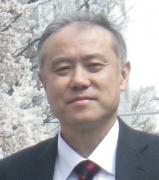Research Experience
-
2016.04-2020.03
JSPS
-
2015.04-
Waseda University Faculty of Science and Engineering
-
2011.04-2015.03
(独)物質・材料研究機構 原子エレクトロニクスユニット ユニット長(兼務)
-
2007.10-2015.03
(独)物質・材料研究機構 国際ナノアーキテクトニクス研究拠点 主任研究者
-
2006.04-2015.03
Yokohama City University Graduate
-
2012.10-2014.05
Waseda University Faculty of Science and Engineering
-
2003.01-2007.09
(独)物質・材料研究機構 原子エレクトロニクスグループ グループリーダー
-
2003.04-2004.03
Ministry of Education,Culture,Sports,Science and Technology
-
2002.08-2003.01
(独)物質・材料研究機構 主幹研究員
-
1999.04-2002.07
(特)理化学研究所 表面界面工学研究室 先任研究員
-
1998.08-1999.03
Hitachi, Ltd., Central Research Laboratory
-
1987.04-1998.07
Hitachi, Ltd., Central Research Laboratory


Click to view the Scopus page. The data was downloaded from Scopus API in January 08, 2026, via http://api.elsevier.com and http://www.scopus.com .